In rural areas, the automobile is an extension of the face. The presence of a man’s car is the flag declaring the presence of his body — as one makes laps around their township for their daily bread and social life, they notice who’s parked where and speculate as to why. The presence of neighbor Bill’s rusty Ford in the pub parking lot may tell of recent feuds with his wife; the simple presence of this inanimate machine in its particular parking space may cause extrapolation about why he is there, what he may have done to upset his wife, and whether he’s high on the whiskey or placidly sipping beer. And indeed, if Bill’s truck is parked at the law office in town later that week, rumors may swirl that a divorce is on the horizon — all without anyone actually speaking to Bill himself. The automobile is the silent and incontrovertible signifier of all social business in any hamlet or holler, and is the precursor to nearly every human moment; from a cousin’s arrival home from the Army to impending breakups to business deals and birthday parties, the ‘face’ provided by one’s car often tells the tale before it even occurs.
For this reason, an out-of-place or unknown automobile triggers a small town’s ‘security system’. The unconscious collective hivemind of townies everywhere notices license plates from out-of-state; it notices cars sided out in strange places, and leers at never-before-seen cars as they pull over to inspect homes for sale. Such arrivals may prompt hasty real estate deals (to “buy grandma’s place before the out-of-staters buy it”) or ranger-like investigations of forested areas. For the illegal cabin builder, such investigations could easily mark the end of his little rogue empire in the woods.
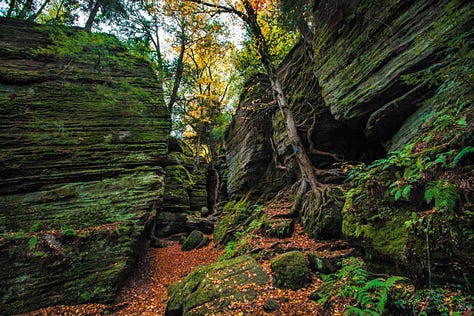

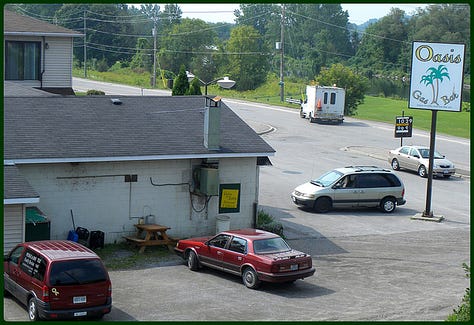
For just as the ruralite is in one sense almost totally bound to the realms of vehicular travel, he also has an eye for the vegetal detail of the forested areas he knows. Just as a woman is rustled by a missing blouse in her closet, local hunters and farmers notice bent branches in bramble and duff. They see the boot print in the mud just past the fishing hole when they lean over for a drunken piss in high July, remarking out loud how strange it is that anyone would’ve gone further upstream. And just as the out-of-place vehicle might raise their hackles in town, so too does a foreign footprint or strange-looking trail in the forest trigger their investigative mind.
Or, at the beating heart of many towns, there is a gas station — the place where all who visit or live in or around the town are subject to visual scrutiny. Does an unknown man say “yes ma’am” or does he glower and huff at the cashier? Does he purchase the fancy beer no one else in town buys or does he confidently grab a case of the local swill? More to the point: Are his jeans covered in burdocks and sticky seedpods from the woods — well out of fishing or hunting seasons? Where was this guy crawling around in the woods, and who is he?
The previous article in this series detailed site selection and the search for legally suitable prospective parcels for establishing a secret cabin. And while these elements are of great importance, they are meaningless without appropriate inquiry into the trail one leaves both in and out of their site — not only physically, but socially. Every element that might make a site ideal is negated if, for example, one parks a car with out-of-state plates along the road nearby, cuts a trail brashly through the undergrowth, or shows up to the local watering hole covered in the little seedpods that only grow on a particular streambed. And so it is that those with ambitions of establishing hidden holes out in the woods must consider all of these signs and address them adequately if they are to go un-discovered.
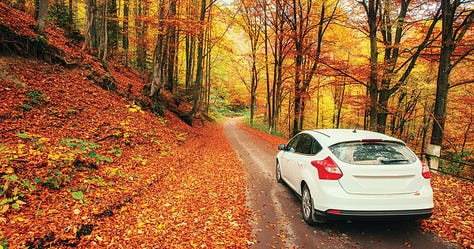
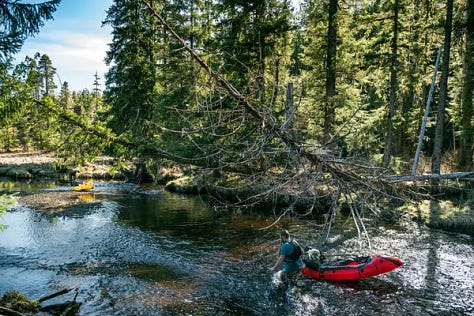
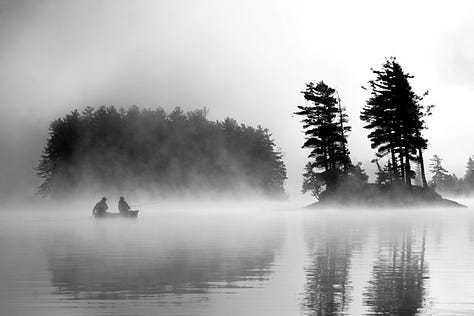
One of the easiest ways to do this is to cultivate oneself in the fine art of ‘rock-hopping’. Streams are one of the greatest non-vehicular inroads to the deep woods, strewn with rock formations that allow for non-trackable passage. On slate-bottomed streams, a man in waders leaves no tracks or lingering scents. And in gushing waters littered with small round rocks, an agile fellow in sneakers can hop from rock to rock with some effort, only occasionally leaving anything resembling a footprint as he avoids rockless bits of stream by walking on the banks. Occasionally, where streams are small affairs of whitewater dropping along elevated ridges, the canyon formations they flow through are spiderwebbed with deer trails along cliffsides — these are excellent areas to pass through, as most locals will recognize them as deer trails, and with careful footing, boot-prints will be covered over in the muddy gouges of trampling deer in mere hours.
Swampy areas, too, can offer the same benefits as creeks — though inasmuch as one leaves a subermged mud track, they must remember that periods of drought can expose hidden underwater trails. Often enough in larger swamps, only the first thousand feet of trail matter much to be kept under cover. The first section of trail ought to involve multiple angles of approach leading to a primitive passage built from logs lashed to standing trees; meaning only a short hike through the water and mud to an elevated, dry walking platform to the cabin site. This is largely because in my experience, swamps are seldom traversed even by the most intrepid hunters and are effective ‘no-man’s-lands’.
Some streams and swamps can also allow for an aquatic approach, even during the wintertime. A simple canoe path through wending complexes of networked streams in boggy areas can allow for a very simple access involving zero tracks — with the added benefit of allowing for the carriage of ‘freight’ such as building materials and stores of bulk food far exceeding what can be carried by backpack on foot. One way to keep the launchpoint low-key is by using a pulley up a tree to pull the canoe up twenty or thirty feet each time you leave the stream complex — far up and out of sight.
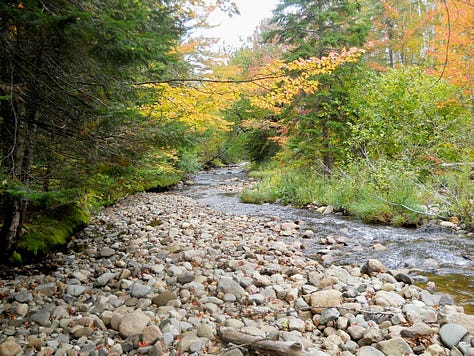
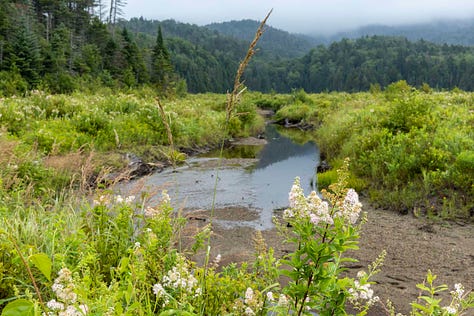
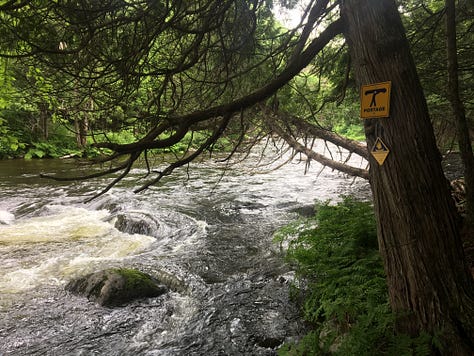
If possible, I would almost always recommend building a secret cabin along some kind of waterway for these reasons, even if the stream is only navigable at high flood. Importing building materials from the outside world can be one way that massive gashes in vegetation are made — telltale signs of out-of-place activity in the woods. If the stream is usually rough whitewater and only deep enough to navigate in the spring floods, a flat-bottomed boat with a come-along and a rope can slough a large load of building materials and food upstream, particularly if its operator dons a wetsuit to survive the icy water. Because I am an incorrigible easterner with fairly minimal knowledge of dryland environments, this approach is my personal focus for this project — deserts and upland steppe have their own challenges I’d do well to leave to the Westerners.
One way to throw off the “automotive security system” present in rural areas is to build covert parking spots for small vehicles like mopeds. This way, a man can transport himself into far-flung forested regions that would require a car without his parking spot giving his position away. A moped like a Honda Ruckus is small enough that a small hole could be dug into which the moped is pulled, with a small cover built over it with glued-on leaf litter. Once the cover is closed, the moped is entirely hidden, and no motorists will notice that a vehicle is there if the secret ‘micro-garage’ is adequately built and camouflaged.
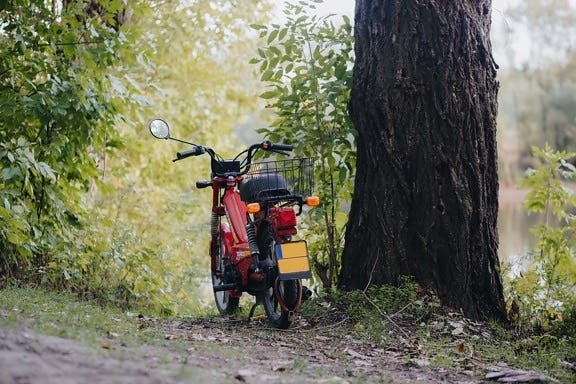
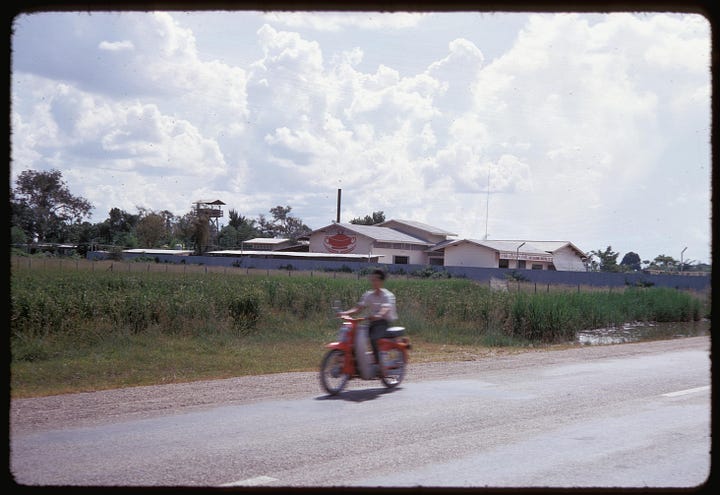
Finally, winter presents some of the greatest challenges. The reality of leaving tracks in the snow is almost impossible to completely mitigate except in environments featuring a heavy and near-constant winter snowfall. Even then, tracks are inevitable. Rock-hopping along streambeds becomes dangerous and slow in winter conditions as snow covers icy rocks and makes ‘holes’ in the frozen sheet along the water. In general, ‘deer highway’ trails made by game present some of the best covert routes into the woods during this season — and otherwise, travel in the forest is a giveaway as to your location. Luckily, very few people move through the woods during these months in the Northeast; while holing up and remaining in place through the winter is best practice, it is not always feasible or desirable, and in that case, making erratic trails in the snow is best. Some have even devised boot covers that mimmick animal prints and one may find success in that, however, in general, I find that winter trails are only rarely noticed or pursued by anyone at all.
Next week, I’ll detail some of the micro-level elements of site selection before finally getting into architectural considerations and the evasion of thermal ‘FLIR’ type aerial surveillance.



